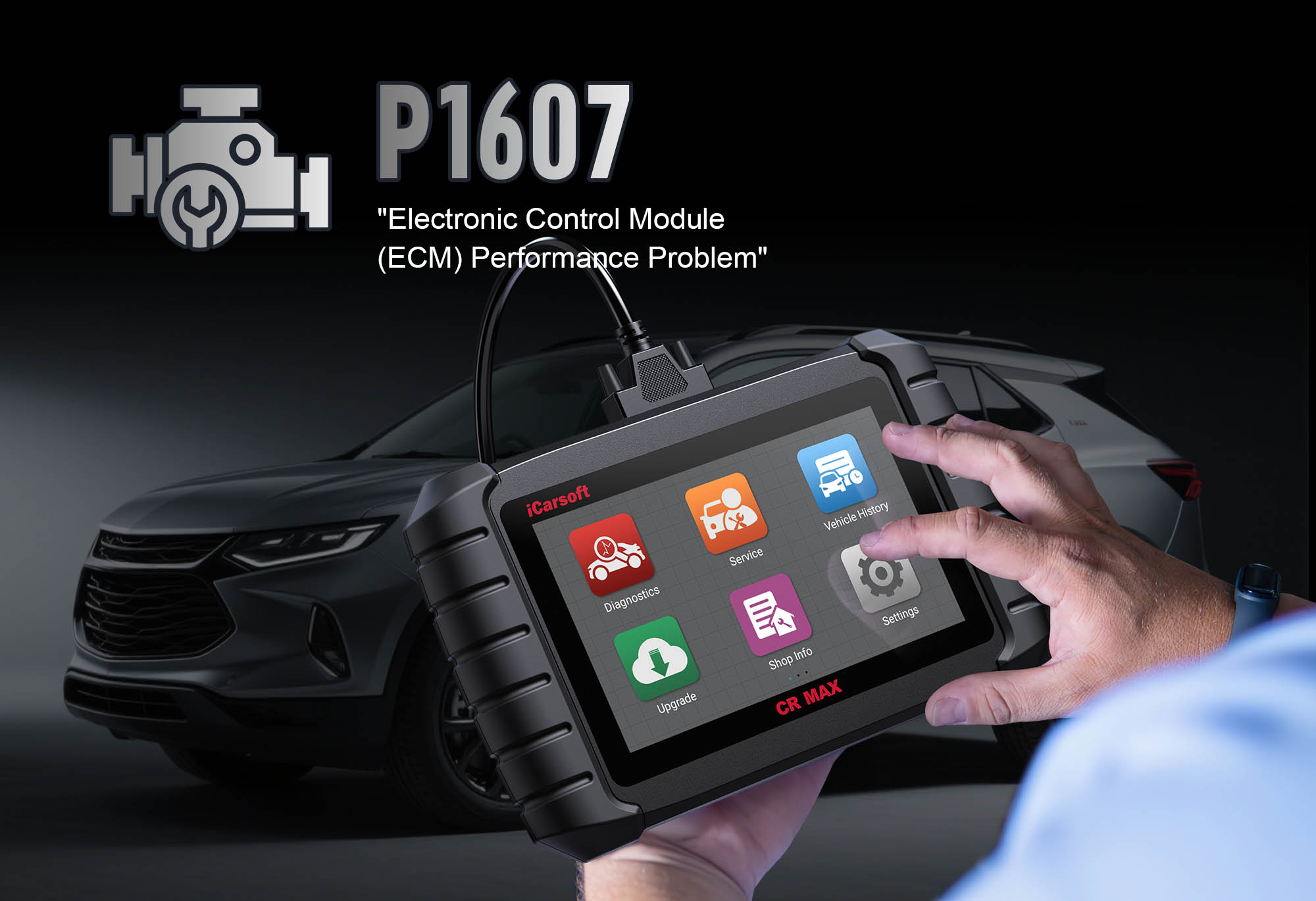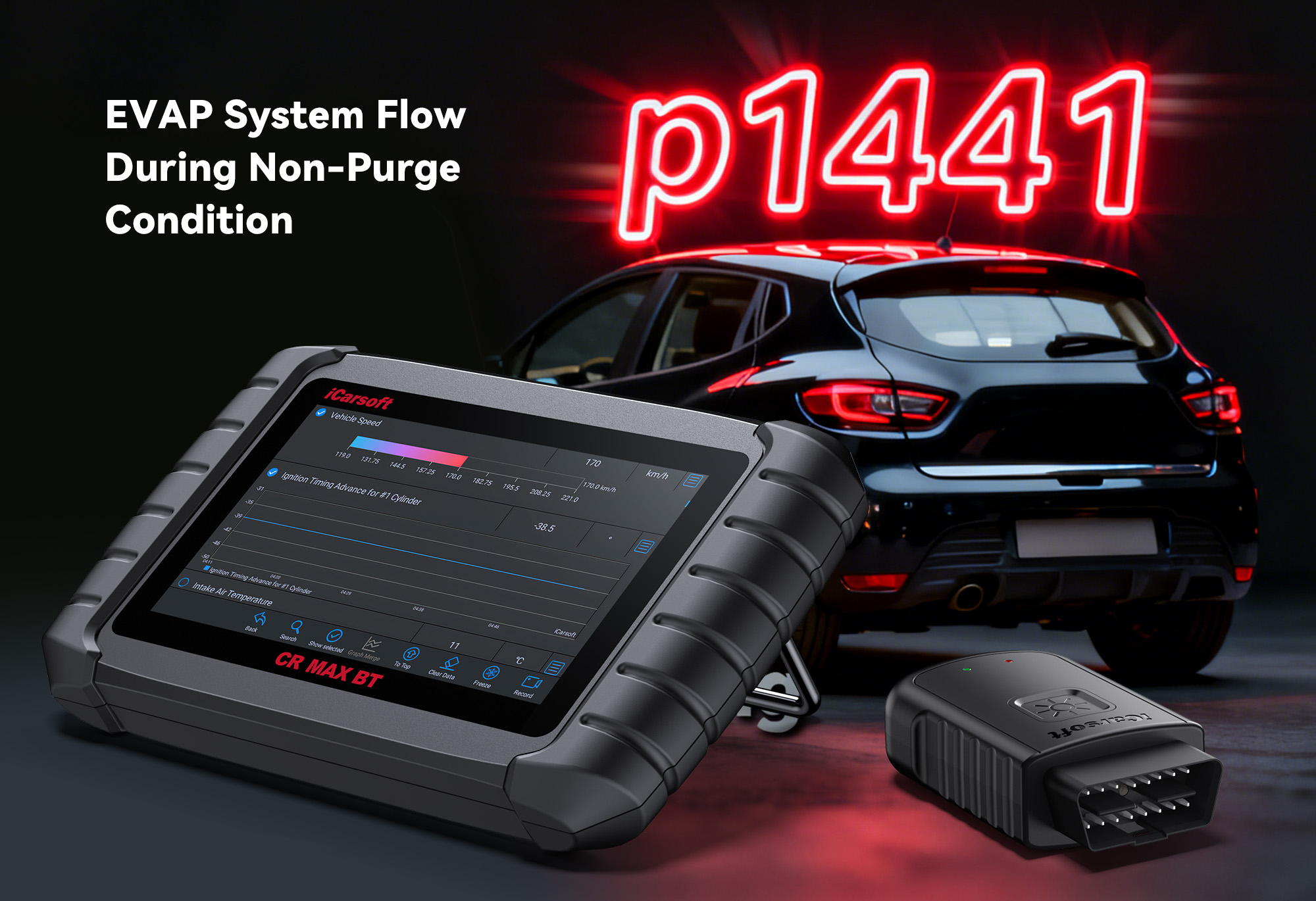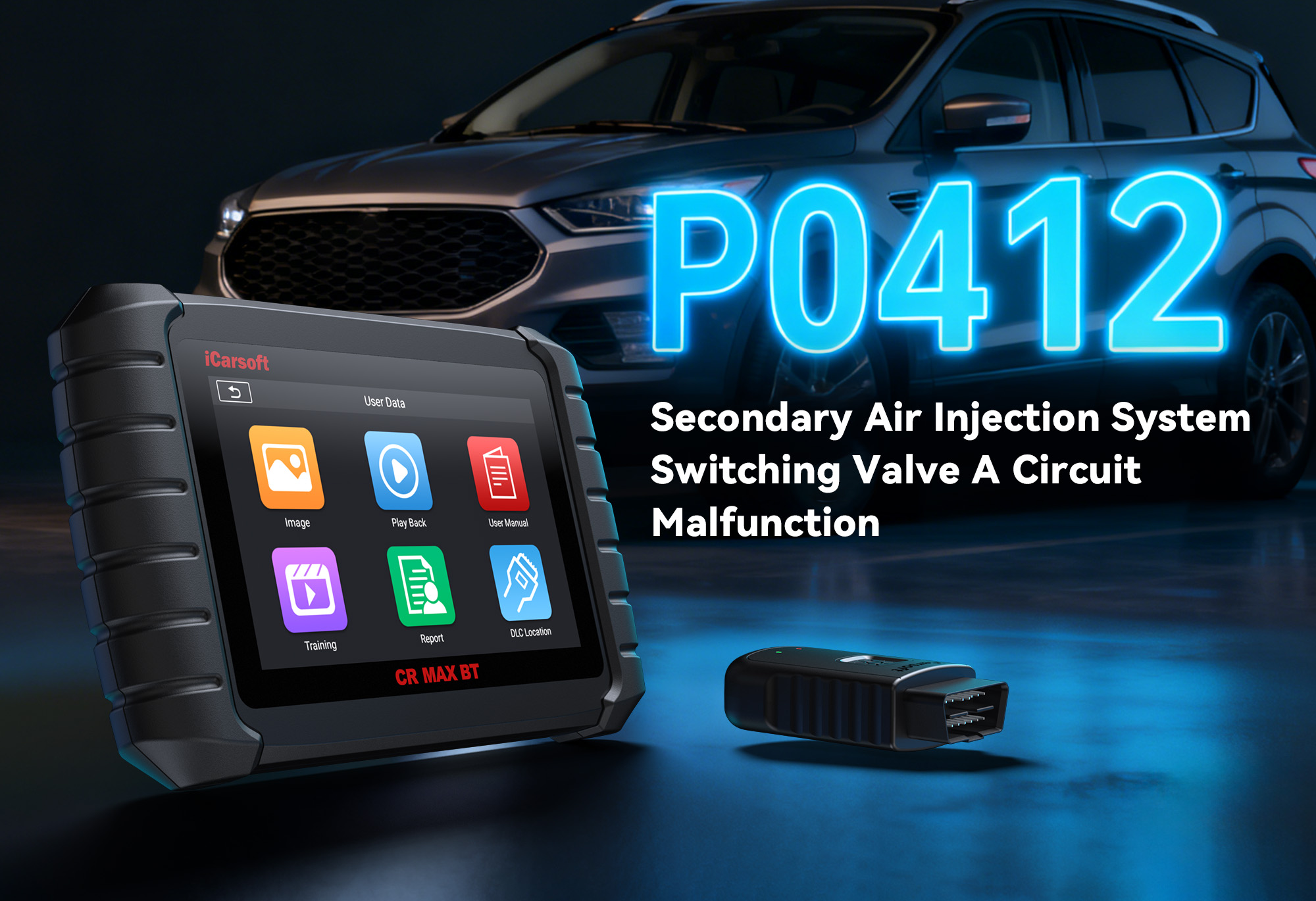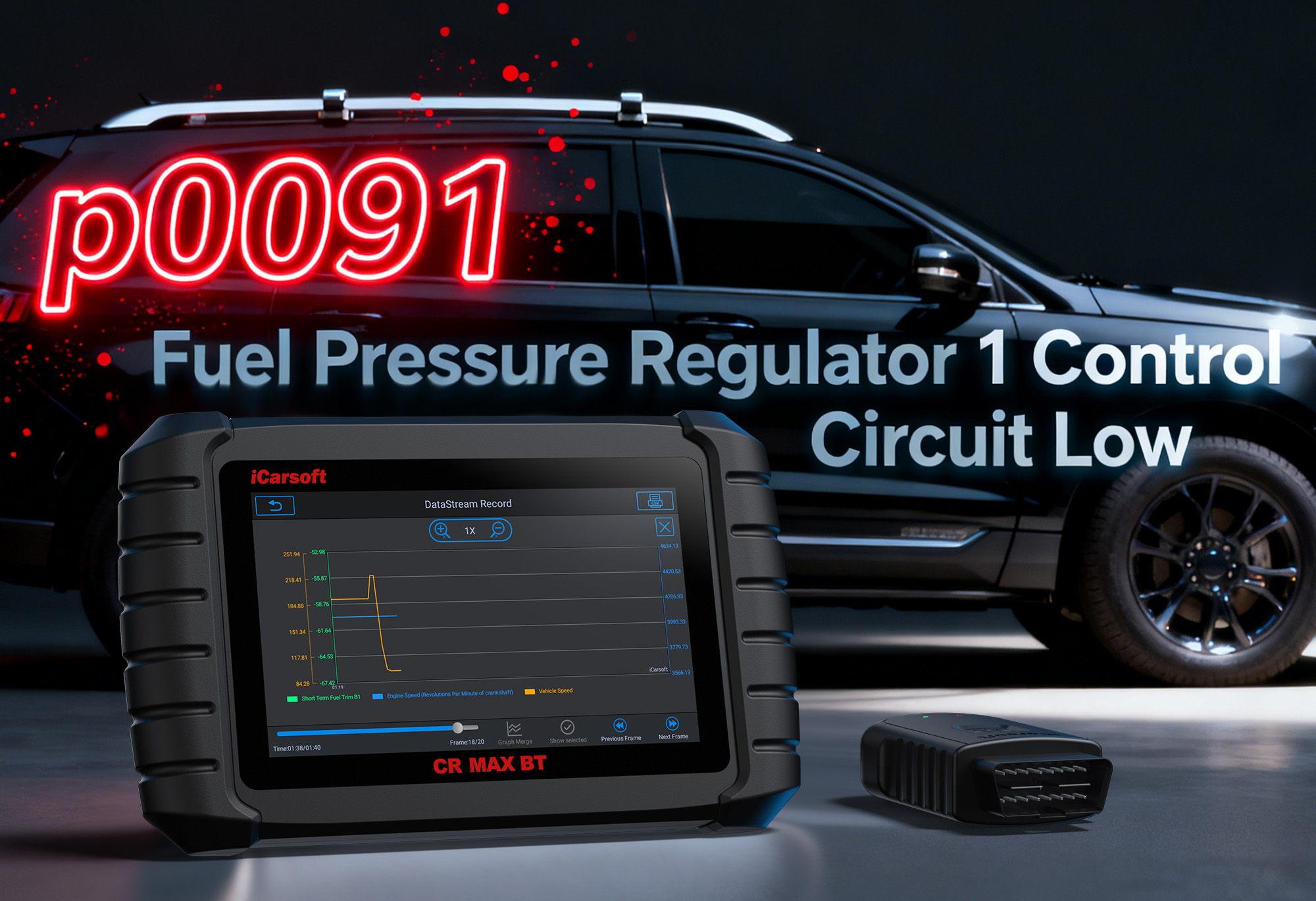Diagnose & Clear P1607 with iCarsoft CR MAX: Fix PCM Memory Errors
If your check engine light illuminates and a scan returns P1607, your vehicle is signaling a critical issue with its powertrain control module (PCM) memory system. This manufacturer-specific code—common in Asian makes like Toyota, Lexus, and Hyundai—stands for “PCM Internal Memory Error” or “Control Module Checksum Failure.” It indicates the PCM has detected corrupted or unreadable data in its internal memory, where critical operating parameters (like fuel trim values and ignition timing maps) are stored.
The PCM relies on stable memory to retain adaptive learning data, which optimizes engine performance over time. When memory corruption occurs, the PCM may default to a “safe mode,” causing reduced power, poor fuel economy, or rough idle. While basic scanners might only flag a “memory error,” the iCarsoft CR MAX digs deeper, with advanced PCM diagnostics and vehicle-specific tools to pinpoint whether the issue is software-related or a hardware failure. Let’s explore how to use it to fix P1607.
Why It Matters
Ignoring P1607 risks more than just a lit check engine light—it undermines your vehicle’s core performance and reliability. The PCM’s memory stores data that fine-tunes every aspect of engine operation: from how much fuel is injected to when spark plugs fire. When this data is corrupted, the PCM can’t optimize performance, leading to reduced power (safe mode activation), increased fuel consumption (up to 15% in some cases), and rough idle that worsens over time. In severe cases, persistent memory errors can cause stalling or even prevent the engine from starting. Additionally, P1607 may mask underlying issues (like voltage instability) that, if unaddressed, could permanently damage the PCM—a replacement that often costs $500–$1,500 for Asian makes.
Understanding P1607: Causes & Symptoms
To diagnose P1607 effectively, first break down the PCM memory system and its failure triggers:
PCM Memory Types
The PCM uses three critical memory components, each with a unique role:
-
ROM (Read-Only Memory): Stores permanent software (e.g., base engine maps and factory settings) that can’t be modified during operation.
-
RAM (Random Access Memory): Temporary data storage for real-time operation (e.g., current engine speed or coolant temperature)—loses data when power is cut.
-
EEPROM (Electrically Erasable Programmable ROM): Saves adaptive learning data (e.g., how the engine responds to different fuels) and user settings—retains data even when the vehicle is off.
Key Symptoms of P1607
-
Illuminated check engine light: The primary and most consistent indicator of a PCM memory issue.
-
Reduced engine power or hesitation: The PCM enters “safe mode” to protect the engine, limiting acceleration and top speed.
-
Increased fuel consumption: Safe mode defaults to a “rich” fuel mixture, lowering efficiency.
-
Rough idle or stalling: Common in cold weather, as corrupted memory prevents the PCM from adjusting to temperature changes.
-
Failure to start (rare): Occurs only with severe memory corruption that disrupts critical start-up commands.
Common Causes of P1607
|
Cause
|
Description
|
|
Voltage Instability
|
Low battery voltage (below 9V) or alternator failures disrupt memory writing/reading—this is the #1 trigger for P1607.
|
|
Software Corruption
|
Glitches from incomplete PCM updates, electrical surges, or temporary power cuts that corrupt EEPROM data.
|
|
Hardware Failure
|
Degraded EEPROM/RAM chips (common in high-mileage vehicles) or damaged PCM circuit boards that prevent memory access.
|
|
Electrical Interference
|
Poorly installed aftermarket electronics (e.g., stereos, LED lights) emit signals that disrupt PCM memory operations.
|
|
Extreme Temperatures
|
Excessive heat (from engine bay) or cold (below -20°C) damages sensitive PCM memory components, causing data loss.
|
Why iCarsoft CR MAX Is Ideal for P1607
Basic OBD-II scanners only flag P1607 as a “memory error” without further details, but the iCarsoft CR MAX is designed to diagnose PCM memory issues with precision—especially for Toyota, Lexus, and Hyundai vehicles:
Advanced Memory Tests
Runs specialized checks for EEPROM corruption, RAM functionality, and checksum failures—pinpointing whether the issue is software (fixable) or hardware (needs replacement).
Asian-Make Expertise
Preloaded with Toyota, Lexus, and Hyundai PCM memory parameters, wiring diagrams, and test procedures (e.g., 2022 Toyota Camry, 2021 Hyundai Sonata) for accurate, vehicle-specific diagnostics.
Real-Time Voltage Tracking
Monitors battery and PCM input voltage (9V–16V safe range) in real time, capturing drops/spikes that corrupt memory—critical for identifying hidden electrical issues.
PCM Software Management
Checks current PCM software versions against manufacturer updates, guides through reset procedures, and flags outdated firmware that causes memory glitches.
Data Logging
Records memory errors over time to distinguish between intermittent (software-related) and permanent (hardware-related) issues—avoids unnecessary PCM replacements.
Auto VIN Detection
Automatically identifies your vehicle’s year, make, and model, ensuring you use the correct PCM memory diagnostic data—no manual guesswork.
Step-by-Step: Diagnose P1607 with iCarsoft CR MAX
-
1. Connect & Confirm the Code
Plug the CR MAX into your vehicle’s OBD-II port (under the dashboard) and power it on. Select your vehicle via Auto VIN (fast and accurate for Asian makes) or manual entry (year/make/model). Navigate to Engine > Fault Codes > Read Codes to confirm P1607. Tap Code Details for make-specific insights (e.g., “Toyota: EEPROM Checksum Error in Adaptive Memory” or “Hyundai: RAM Read Failure”).
-
2. Check for Voltage Instability
Voltage drops are the top cause of memory corruption. Go to Engine > Live Data > Electrical System and select:
- “Battery Voltage” (should read 12.4–12.7V when off; 13.5–14.5V when running).
- “PCM Input Voltage” (must stay within 9V–16V to protect memory).
Start the engine and monitor for 5–10 minutes: Voltage below 9V during cranking = weak battery; inconsistent readings = wiring/connection issues (address in Step 4).
-
3. Run PCM Memory Diagnostics
Use the CR MAX’s specialized tests to isolate memory issues: Navigate to Special Functions > PCM Tests > Memory Diagnostic. Follow on-screen prompts to run three key checks:
- Checksum Validation: Verifies EEPROM data integrity—“failed” = corrupted adaptive data.
- RAM Function Test: Ensures temporary memory works—“failed” = RAM hardware issue.
- EEPROM Write/Read Test: Checks if the PCM can save/retrieve data—“failed” = EEPROM chip damage.
Save results to the CR MAX’s Notes for reference.
-
4. Inspect PCM Connections & Wiring
Loose or corroded connections disrupt voltage to the PCM. Use the CR MAX’s Component Location tool to find the PCM (usually under the dash or in the engine bay). Visually inspect:
- PCM connectors for green/white corrosion or bent pins (clean with electrical contact cleaner if needed).
- Wiring harnesses for fraying (especially near hot components like the exhaust manifold).
- Ground straps (ensure tight, rust-free contact with the chassis).
Retighten connectors—this resolves ~30% of intermittent P1607 cases.
-
5. Test Battery & Charging System
A weak battery or failing alternator causes persistent voltage drops. Run:
- Special Functions > Battery Test: Check “State of Charge” (>75% is healthy) and “Load Test” (fails = replace battery).
- Special Functions > Charging System Test: Verify alternator output (13.5–14.5V when running—low = alternator replacement).
Replace faulty components before proceeding—voltage instability will re-corrupt memory otherwise.
-
6. Attempt PCM Memory Reset
For software-related corruption, resetting memory often fixes P1607. Go to Special Functions > PCM > Adaptive Memory Reset. Follow make-specific steps:
1. Turn the ignition to “ON” (don’t start the engine).
2. Confirm the reset (this clears corrupted EEPROM data).
3. Wait 5 minutes, then start the engine.
Note: This won’t fix hardware issues but resolves ~40% of P1607 cases caused by glitches.
-
7. Update PCM Software (If Needed)
Outdated PCM software can cause memory errors. Navigate to Special Functions > PCM > Software Version to check your current firmware. Compare it to the latest manufacturer update (the CR MAX’s database displays this). For supported vehicles, follow Software Update prompts (requires a stable Wi-Fi connection) to install fixes for memory-related bugs.
-
8. Clear P1607 & Verify Repairs
After addressing issues, go to Engine > Fault Codes > Clear Codes to delete P1607. Take a 30-minute test drive (include idle, acceleration, and highway driving) to stress-test the PCM. Use the CR MAX’s Data Logging to record memory status. Re-scan: No P1607 = successful repair; code returns = PCM hardware failure (proceed to Step 9).
-
9. Replace the PCM (If Necessary)
For persistent hardware failures (e.g., failed RAM/EEPROM tests):
1. Use the CR MAX’s Part Lookup to find a compatible OEM PCM for your Toyota/Lexus/Hyundai.
2. Follow the tool’s PCM Programming Guide to configure the new module (critical—aftermarket PCMs won’t work without vehicle-specific programming).
3. Re-run memory diagnostics to confirm the new PCM functions properly.
Preventing P1607 Recurrence
Use the iCarsoft CR MAX to maintain healthy PCM memory and avoid future errors:
-
Quarterly Voltage Checks: Run Engine > Live Data > Electrical System scans to monitor battery and PCM voltage stability—catch drops early.
-
Battery Maintenance: Replace batteries every 3–5 years (use the CR MAX’s Battery Test to confirm health) and clean terminals annually to prevent corrosion.
-
Avoid Electrical Surges: Use surge protectors when jump-starting—surges damage PCM memory chips.
-
Limit Aftermarket Electronics: Test new gear (e.g., stereos) with the CR MAX’s Noise Detection tool to ensure it doesn’t emit interference that disrupts the PCM.
-
Software Updates: Use the CR MAX’s One-Key Upgrade to install manufacturer PCM updates—these often include fixes for memory-related bugs.
Summary Table
|
Step
|
Action
|
|
1
|
Connect CR MAX, confirm P1607, and review make-specific details
|
|
2
|
Monitor battery/PCM voltage for instability (9V–16V safe range)
|
|
3
|
Run PCM memory tests (checksum, RAM, EEPROM) to isolate issues
|
|
4
|
Inspect PCM connectors, wiring, and ground straps for damage
|
|
5
|
Test battery/alternator and replace faulty components
|
|
6
|
Reset PCM adaptive memory to fix software corruption
|
|
7
|
Update PCM software if outdated
|
|
8
|
Clear P1607, test drive, and re-scan to verify repairs
|
|
9
|
Replace and program new PCM if hardware fails
|
Final Thoughts
P1607’s “PCM memory error” label can feel intimidating, but the iCarsoft CR MAX turns guesswork into precision. By distinguishing between fixable software glitches (e.g., corrupted EEPROM data) and hardware failures (e.g., faulty RAM chips), it saves you from costly, unnecessary PCM replacements—especially critical for Toyota, Lexus, and Hyundai vehicles where OEM PCMs are expensive.
Whether you’re resetting adaptive memory, updating software, or identifying a failing battery, the CR MAX’s Asian-make expertise and advanced diagnostics ensure you resolve P1607 efficiently. By addressing the root cause (not just the code), you restore your vehicle’s performance, improve fuel economy, and protect the PCM from long-term damage.
FAQs About P1607 Code
Q: Can I drive my Toyota/Lexus/Hyundai with P1607?
A: Short-term driving is possible if you only notice a check engine light, but avoid long trips. The PCM’s “safe mode” reduces power and increases fuel consumption, and persistent memory errors can lead to stalling. Use the CR MAX to diagnose the issue within a few days of seeing the code.
Q: Will resetting PCM memory always fix P1607?
A: No—resetting works only for software-related corruption (e.g., glitches from power cuts). If the CR MAX’s memory tests show failed RAM/EEPROM hardware, a reset won’t resolve P1607, and you’ll need to replace the PCM.
Q: Why is P1607 more common in Toyota, Lexus, and Hyundai?
A: These brands use PCMs with highly sensitive EEPROM chips optimized for fuel efficiency. While this improves performance, it also makes the memory more vulnerable to voltage drops—common in older vehicles with aging batteries or alternators. The CR MAX’s Asian-make tuning addresses this vulnerability specifically.
Q: How much does it cost to fix P1607?
A: Costs vary by cause: Resetting memory or cleaning connectors = $0 (DIY with CR MAX); replacing a battery/alternator = $150–$400; replacing and programming a PCM = $500–$1,500 (OEM parts for Asian makes). The CR MAX helps avoid the most expensive fix by identifying software issues first.





